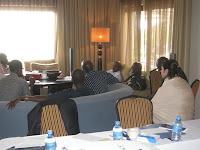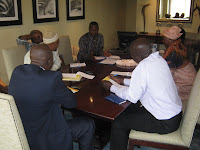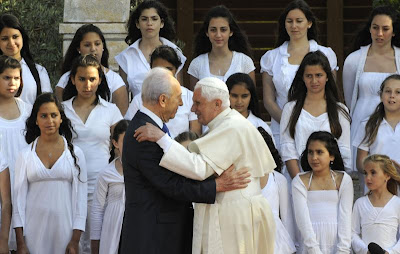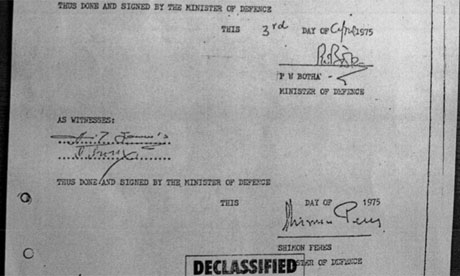With an eye on enhancing project implementation strategies and ensuring the sustainability of projects we are co-financing in the Andes, a team of consultants and staff members from IFAD’s Latin America and the Caribbean Division met with representatives from Bolivia, Colombia, Ecuador, Guyana, Peru and Venezuela in a workshop held in the rough-and-ready resort city of Atecames, Ecuador, from 3 to 7 May.
The workshop, a third in a series of events we’ve held in
Nicaragua and Argentina over the past year, was a great success. Not only did we get to share new ideas with delegates from the finance, agriculture and planning ministries of these countries, but we also had the unique opportunity to meet with representatives from the very organizations that are implementing our projects on the ground.
IFAD co-finances 11 projects in the Andean region with more than US$150 million in funding. The projects run the gamut. There are projects designed to better the lives of llama ranchers in Bolivia, projects to integrate the rural and urban economies in Ecuador, and micro-enterprise programs in Colombia.
On the first day of the conference, representatives from the Ecuadorian Ministry of Finance (co-hosts of the event), our Country Program Manager for Bolivia, Ecuador and Venezuela, Francisco Pichón, and I kicked off the discourse, as we started the hard work of finding lasting mechanisms for project implementation.
Key to program supervision and implementation is the idea of accompanying our counterparts within the region, rather than controlling their projects. As we say in Spanish “acompañar, no controlar.”
This cooperative spirit led directly into a high-level panel that i ncluded Ecuadorian Agricultural Minister, Dr. Ramon L. Espinel (right); Nelson Iván Zambrano, representative from the Ecuadorian Secretary of Planning and Development; María Elsa Viteri, Ecuador’s former Finance Minister; Madeleine Abarca, representative from the Ecuadorian Finance Ministry; and Milton Maya from the Ecuadorian Ministry of Economic and Social Inclusion (MIES).
ncluded Ecuadorian Agricultural Minister, Dr. Ramon L. Espinel (right); Nelson Iván Zambrano, representative from the Ecuadorian Secretary of Planning and Development; María Elsa Viteri, Ecuador’s former Finance Minister; Madeleine Abarca, representative from the Ecuadorian Finance Ministry; and Milton Maya from the Ecuadorian Ministry of Economic and Social Inclusion (MIES).
While more than 85 per cent of the food consumed in Ecuador is produced by smallholder farmers, the Agricultural and Financial Ministries were concerned that the country continues to lack the infrastructure and financial backbone necessary to help these farmers create sustainable models for their small businesses. That said, with rice production up by 26 per cent, and positive glimpses that our work in the Central Corridor will yield results – despite preliminary setbacks resulting from the project being moved from the Agricultural Ministry to the MIES - we are seeing promising signs not just for Ecuador but for the sub-region in general.
We are also hoping our Ibarra-San Lorenzo Development Project will jump into action in the next few months, providing new markets and market integration for the people of the northern Ecuador.
In fact, one of the reasons we decided to hold the conference in Atecames, a small beachside hamlet about an hour south of the port city of Esmeraldas, was to actively engage with the local population, looking for cultural and economic clues that could inform the Ibarra-San Lorenzo project, as well as our other projects in the Andean region.
This region presents a unique socio-cultural challenge. The side-effects of the conflict in neighbouring Colombia are readily evident in the area: high crime, regular protests and a rather disenfranchised local population that is mainly comprised of Afro-Ecuadorians, with a small share of mestizo settlers thrown into the mix.
These are the very people we are hoping to reach. And, happily, some of our funds are already getting there, with ACUA, a regional program designed to help Latin Americans with African ancestry overcome poverty, funding cacao productions in the region. See www.programaacua.org for more details on the ACUA’s projects. (right: Wilfrido Trejo, VP FONSUAM Cocao farmers group)
(right: Wilfrido Trejo, VP FONSUAM Cocao farmers group)
And while we certainly want to keep our focus on the poor rural people of the region, it’s also important to roll up your sleeves and dive into the heady – but nonetheless necessary – topic of project implementation, and the even more difficult (and delicate) topic of sustainability.
TRENDS IN PROJECT IMPLEMENTATION & SUSTAINABILITY
Since we began our Action Plan in 2005 – and taking into account the Strategic Framework for 2007-2010 – the Atecames conference looked to build organizational efficiency, increase the impact and sustainability of our interventions, and generate concrete products and positive effects from our work.
From this very dynamic dialogue, where project directors from across the region presented the challenges and accomplishments of implementing their projects, we took a few important lessons with us.
Lesson Numero Uno: IFAD as an organization needs to bring itself closer to the people and organizations building these projects on the ground through direct supervision and systematic project implementation support.
Numero Dos: Economic, social and institutional sustainability needs to be built into the project cycle from the beginning.
Numero Tres: One of the best ways to achieve this sustainability is by engaging directly with the communities themselves to scale-up initiatives already being implemented on the ground. We also need to ensure that all key stakeholders are actively engaged in the decision-making process.
Numero Cuatro: Gender and culture are integral ingredients for a sound implementation plan.
And Numero Cinco: The only way to have sustainable results is to allow smallholder farmers to be the masters of their own destiny, bringing them into the process of project implementation – from conception to delivery – as equal partners in our collaborative effort to end rural poverty.

Castillo Valdez, President of FONSUAM

































